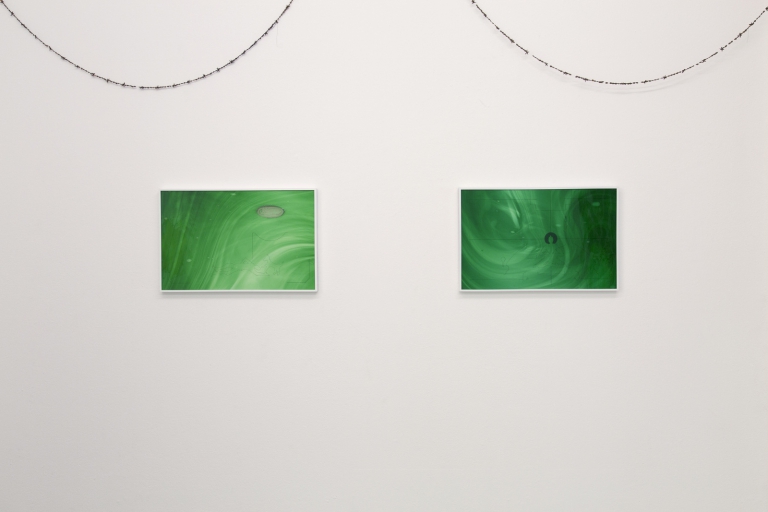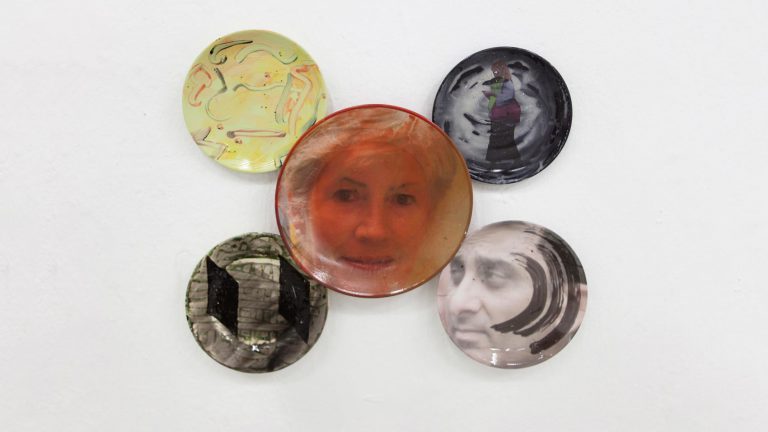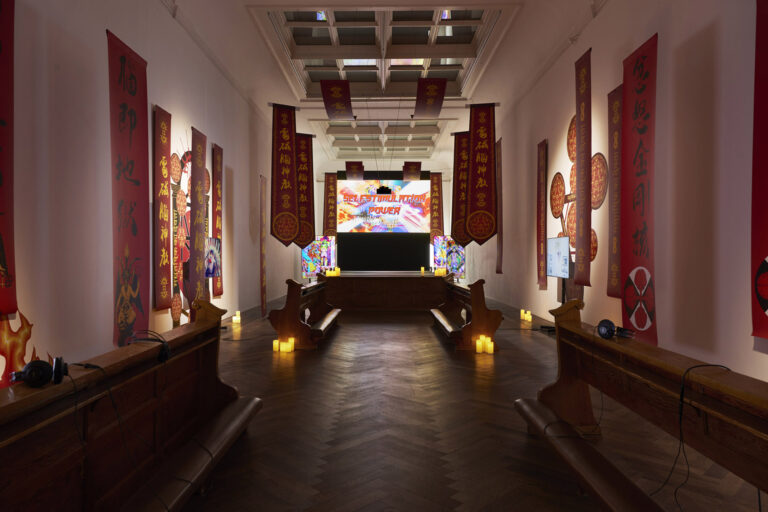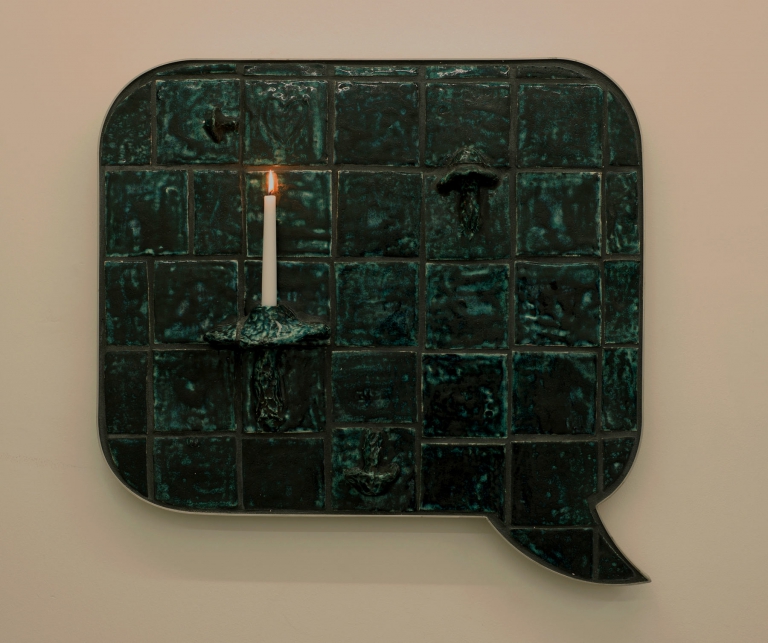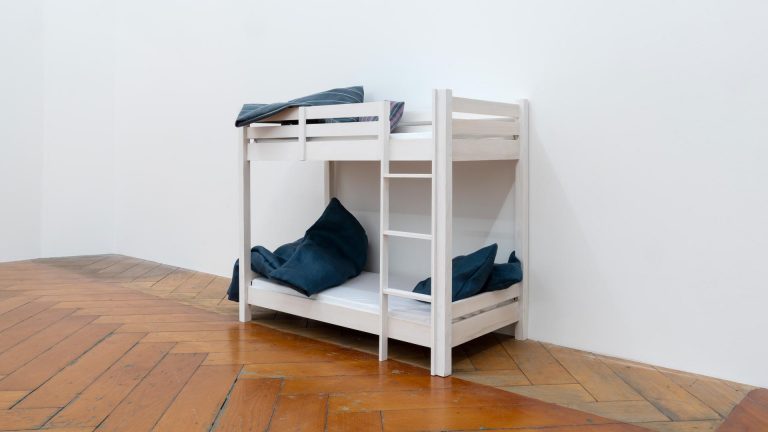Artists: Violeta Burckhardt, Elise Corpataux, Claudia Comte & Adeline Mollard, Solange Pessoa, Ugo Rondinone, Peter Zumthor
Exhibition title: This Morning, in the Sweet Torpor of the Great Forest, is Like Every Morning in the World
Curated by: Samuel Leuenberger and Claudia Comte
Venue: SALTS, Birsfelden, Switzerland
Date: October 4 – December 19, 2020
Photography: Gunnar Meier Photography / Courtesy: SALTS & the Artists
SALTS is pleased to present the inaugural exhibition This Morning, in the Sweet Torpor of the Great Forest, is Like Every Morning in the World curated by Samuel Leuenberger and Claudia Comte.
The exhibition launches Country SALTS´ programme in its new environment perched amongst the rolling green hills of the canton Baselland (Canton of BL), with a discussion on nature imagined through the diverse approaches of seven artists. Spanning various media – including painting, sculpture, graphic design, and landscape/architecture – the artworks in the exhibition highlight the ways in which artists today, during a time of immense social and environmen-tal upheaval, identify with nature and the often romanticised pastoral scene. The exhibition challenges the concept of countryside as peripheral space, always outside the citified centre, and reflects on the regenerative force with which nature persists in the realm of art history until today. The artists in the exhibition, are drawn together through their nuanced examinations of the inexhaustible link between the human condition and nature. Here, we find ourselves able to take repose in states of torpor, emboldenment or something other.
In the centre of the exhibition space Violeta Burckhardt’s towering installation, Wir Schaffen Das, stages an analogous portrait of migration, beauty and cultural diversity that reveals the ways in which plants and humans are intricately connected. The installation consists of a Fiat Seceinto Cabriolet, overgrown with several Trachycarpus fortunei, an invasive palm creating a new form of symbioses of fauna and flora in the forests of Ticino and elsewhere in Southern Europe. The palm tree was introduced to a botanical garden at Isola Bella, on the Italian side of the Lago Maggiore some years ago from China. It is now ubiquitous in the Swiss canton of Ticino, creating an impossible terrain of deciduous and evergreen, native and non-native flora, a so-called charming “exoticism”that is much loved by residents and tourists alike. So much so the palm was made one of the cantons cultural symbols despite being an invasive plant. Wir Schaffen Das echoes Chancellor Angela Merkel’s, assertion to help incite compassion and solidarity during the 2015 refugee crises and again amidst the COVID-19 pandemic. In relation to the artwork, the phrase draws attention to the complicated ways ecology becomes entangled with the political and the personal, and how the displacement of environments due to human intervention and climate change can create a ripple effect of entropic states.
Nearby Burckhardt´s work, an architectural model by Peter Zumthor captures an act of human intervention residing in harmony with it’s natural environment. Following the phenomenology of Martin Heiddeger, Zumtors projects depict the non-hierarchical physical presence of building and place, giving primacy to the sensorial and the experiential over the purely technological or theoretical. Revealing the architects journey through experimentation and ideation, the mne-monic object, embodied in structural, sculptural and atmospheric materiality, acts as proposi-tional tool that holds the promise of the object the architect is seeking. Zumthor who is known to ‘give time’ to his projects in order to perfect them as a holistic experiences, likewise in his models seeks a perfection that becomes life-like in their attention to details.
Romanticism’s mythologising of mountains and sunsets as symbols of revelation are reanimat-ed by various artists in the exhibition. In vierterdezemberzweitausendundneunzehn (2019), Ugo Rondinone depicts a sunrise rendered in softly brushed watercolour. The artist’s composition of the sun and horizon evinces a scene of serene interiority, evoking a desire to acquiesce to time, solitude and the natural world. The paintings in this series, titled the Mattituck paintings, show the view from Rondinone’s studio window across the Long Island Sound. There he would watch the sun falling each day with his husband John Giorno, revelling in its “magical illumination of the ordinary”. Rondinone, who has lived in New York City since the late 1990’s, has worked with the category of the landscape throughout his career from his long standing series of mono-chrome landscape paintings in Indian ink to building his ideal home in the countryside outside of Zurich, or placing a series of stacked day glow coloured limestone boulders in the Nevada desert. His objects are embodied poems, lyrical and allusive, that seek out the link between nature and the human condition, the physical and spiritual.
Here and in the work of Elise Corpataux, the sun signifies the connection between the human and the divine, the transcendent outside. Reflections on paintings’ ability to convey pathos and affectivity is also present in the series of paintings by Corpataux whose depictions of sunsets are mimicries of those gleaned from Instagram. Corpataux´ sensual depictions of mediated sun-sets reveal our online and networked link to the outside, and contextualises how immanence manifests in contemporary life. The artist is particularly interested in the way painting possesses a special capacity to convey sentimentality. For Corpataux the sentimentalism of witnessing a sunset today is complicated through the ubiquity of its depiction on social networks, via layers of mediation and meta-experiences. In these instances, affect is felt through the moments of sharing and reposting rather than the instance of witnessing the sunset itself.
In Claudia Comte and Adeline Mollard’s wall painting, language is used as both formal and expressive devices in the representation of a landscape. The work is comprised of words arranged in a typographical arrangement reflecting the peaks and valleys of a mountain scape. Mirroring the effect on the wall is the meaning of the text itself; a discussion on nature and landscape painting between an art student (Claudia Comte in 2007) and one of her mentors, Swiss painter, master engraver and thinker, Pietro Sarto. Comte and Mollard have collaborat-ed on text and image based projects for many years. This work is the cumulation of a series of interviews Comte has conducted since 2007 with artists, curators, scientists, and other collaborators which have been translated into graphic compositions, either in print, canvas or like here, site-specific on the walls of an exhibition space. The work is accompanied by a small print run publication that includes the full interview between Sarto and Comte, as well as a fold-out print designed by Mollard.
In the sculptural practice of Solange Pessoa the lines demarcating art, nature and life are continuously obscured, a coalescence the artist embraces. Pessoa´s deep bond with nature is rooted to the rich terrain of her native home Mias Gerais, a state located in south-eastern Brazil. Her commanding connection to the environment emboldens her rigorous investigations into organic matter, culminating in her telluric works comprised of organic and unconventional material, such as hair, grass, fruit, feathers, minerals and moss to name just a few. The instal-lation Untitled (Bronze and grapes) was developed ‘mentally’ for several years through studies, models, observations, and documentation on the durational process and transformation of grapes, which has become its essence in a ‘transubstantialiation’ of matter over time. Time and space, matter and spirit, light and shadow, life and death, are all issues that the installation presents in its physical, temporal, and symbolic intensity. Her wall based works on display, Zooanthropomorphic ceramics are kinds of magical, open, receptive, and ritualistic objects. They exist in groups and connect multiple and hybrid universes in dialogical relationships with spaces. Numerous materials make up their structures such as feathers, hair, fur, wool, leaves, grass, flowers, roots, panels, etc.
The exhibition is supported by kulturelles.bl


































